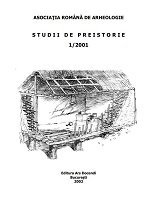Culesul, pescuitul şi vânătoarea în cultura Boian pe teritoriul României
Harvesting, fishing and hunting in the Boian culture from Romania
Author(s): Adrian Bălăşescu, Valentin RaduSubject(s): Archaeology
Published by: Editura Cetatea de Scaun
Keywords: archeozoology; harvest; fishery; hunting; Néo-Eneolithique; Boian culture; South-East Romania;
Summary/Abstract: The present study reviews the archaeozoological analyzes of the 17 Boian settlements (Neolithic) found in the territory of Romania. It tries to catch the main characteristics of animal palaeoeconomics especially with regard to gathering, fishing and hunting. Archaeozoological research in recent years has provided new information with regard to the importance of shellfish harvesting and fishing. Thus, the harvesting of molluscs, an underestimated occupation for most Boian settlements, is highly developed, especially for those near the Danube, which indicates that Neolithic people knew this food source well. Fishing is also very important in settlements near the Danube and major rivers. Here, we found large quantities of fish that of course brings a high level of animal protein in the diet. The large, specific, size-specific variety of taxa shows us that there are no preferences for one species or another, and that fishing exploits the potential of the surrounding environment very effectively. Hunting has a secondary role in paleoeconomy over livestock. It is an additional source of food of animal origin which sometimes reaches a high rate but without exceeding the breeding rate. This is the case of the sites Siliştea-Conac (32.6%), Isaccea-Suhat (28.15%) and Hârşova-tell (21.9%). They often hunted large mammals such as deer, aurochs, roe deer, horse and wild boar which brought a large quantity of meat but also other products such as bones, horn skin, etc.
Journal: Studii de Preistorie
- Issue Year: 2001
- Issue No: 1
- Page Range: 73-94
- Page Count: 22
- Language: Romanian

